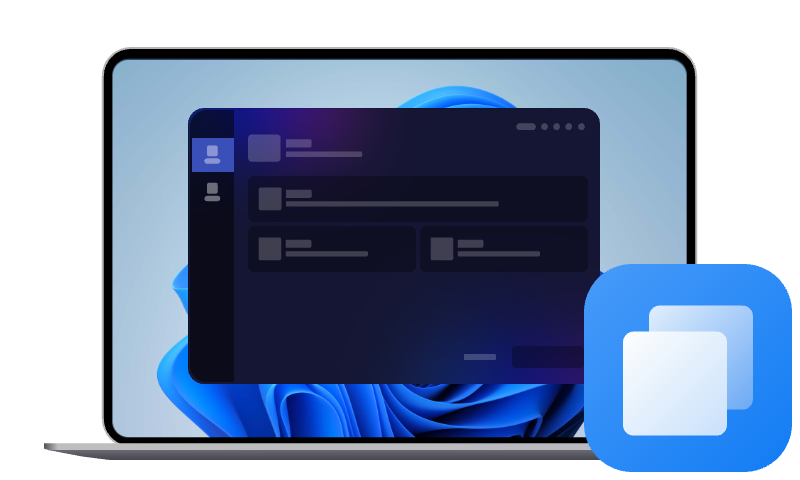Quick Fixes to Flash Drive Not Showing Up on Windows PC
Plug a USB flash drive to your computer but your computer doesn’t see the drive? Don’t worry! Find quick fixes to the issue from this page.
Why my USB is not showing up?
There’s nothing more frustrating than plugging in a USB flash drive and realizing it’s nowhere to be found on your computer. A flash drive not showing up can be caused by a variety of factors. Let’s break down the most common reasons:
✅Loose or Faulty Connection: A loose USB port, damaged connector, or even a faulty USB cable (for USB-C drives) can prevent the drive from being recognized.
✅Drive Letter Conflict: If your USB drive has been assigned a drive letter that conflicts with another device or is hidden, the system might recognize the drive but not display it in File Explorer.
✅Outdated or Corrupt USB Drivers: If USB controller drivers are missing, outdated, or corrupted, the flash drive may not show up at all.
✅Unsupported or Corrupted File System: If the USB is formatted with a file system your computer doesn’t recognize (like EXT4 for Linux), it won’t appear in File Explorer.
To protect yourself in the future, it is suggested to clone your USB drive to another one with a specialized disk cloning tool.
How to fix flash drive not showing up on Windows 11/10
When your computer does not recognize USB flash drive, there are a couple of simple steps you should try first.
1. Try Another USB Port or Computer
● Unplug your flash drive and plug it into a different USB port on the same computer.
● If that doesn’t work, try connecting it to a different computer entirely.
2. Restart Your Computer
Sometimes the operating system doesn’t initialize the USB controller properly, or it gets “stuck.” A restart resets the USB ports and forces the system to re-detect all connected devices, including your flash drive.
If the problem persists, try the following advanced solutions:
Fix 1: Assign or Change the Drive Letter
If you cannot see USB drive in File Explorer, it may not have a drive letter assigned—or it may be conflicting with another device. Follow these steps to fix it:
1. Press Windows + X and choose Disk Management from the menu.
2. Look for a volume labeled as “Removable” or “USB drive”. Right-click the drive and select Change Drive Letter and Paths.
3. Click Add (if no letter) or Change (to assign a different one). Choose a new letter from the dropdown list and click OK.
4. Your flash drive should now appear in File Explorer with the new letter assigned.
Fix 2: Reformat USB Drive
If your USB flash drive is showing up in Disk Management but appears as RAW or unallocated, the file system may be corrupted or unsupported. Here’s how to fix it:
⚠️ Important: Reformatting will erase all data on the drive. If the files are important, try data recovery software first.
1. Open Disk Management and find your USB drive.
2. Check the status of the USB drive.
- If it shows as RAW, right-click the drive and choose Format, then choose a file system.
- If it shows as Unallocated, right-click the drive and choose New Simple Volume, then follow the wizard to make a partition on it.
3. When the process is done, check whether the flash drive appears in Windows now.
Fix 3: Update or Reinstall USB Drivers
If the USB port works but still doesn’t detect your flash drive, outdated or corrupted USB drivers might be to blame. Learn how to fix it below:
1. Press Windows + X and choose Device Manager.
2. Expand the section labeled Universal Serial Bus controllers.
3. Right-click each USB Root Hub, USB Mass Storage Device, or Generic USB Hub listed and select Update driver.
4. Click Search automatically for drivers and follow the prompts. If Windows finds new drivers, it will install them automatically.
5. After installation, reconnect your flash drive and check if it appears.
✍ Note:
You can also reinstall USB drivers manually.
● Right-click on USB Mass Storage Device or any suspiciously labeled device (e.g., “Unknown device”).
● Select Uninstall device.
● Confirm and then restart your PC. Windows will automatically reinstall the correct driver during the reboot.
Bonus: Copy USB to another USB as backup
If your flash drive has ever stopped working unexpectedly, you know how important backups are. Instead of waiting for something to go wrong again, why not clone your USB drive to another one for safekeeping? The best free disk clone software – AOMEI Cloner Free can give you a hand.

-
Full Disk Clone: Clones the entire USB drive, including hidden files.
-
Partition Clone: Select a specific partition to clone.
-
Bootable Media Creation: Allows you to create a bootable USB, CD, or DVD to perform cloning from WinPE.
-
Compatibility: Works with all kinds of USB drives, including flash drives and external HDDs/SSDs.
Download AOMEI Cloner now to try it out! To copy USB drive to another USB drive, just click Clone > Disk Clone and follow the on-screen instructions.
Summary
A flash drive not showing up can be caused by anything from loose connections and driver conflicts to file system corruption or hardware failure. The good news? Most issues can be fixed with a few simple steps.
And don’t forget to protect yourself in the future. Tools like AOMEI Cloner make it easy to back up your flash drive to another device—so your files are safe even if your USB fails unexpectedly. Just go for it!

